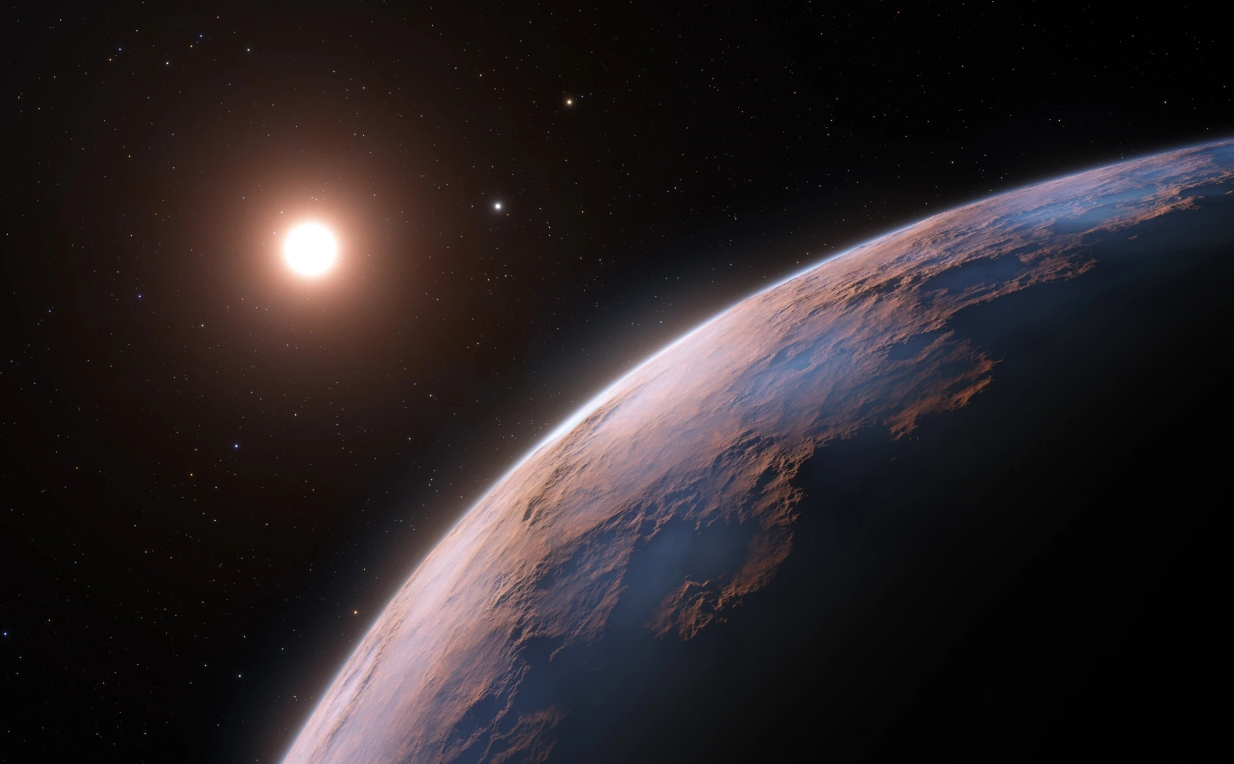Carbon dioxide (CO2) has been detected in the atmosphere of a Saturn-sized planet 700 light-years away, marking the first unambiguous detection of the gas on an extrasolar planet. The discovery made by the James Webb Space Telescope provides insight into the formation of the planet. The result also demonstrates how rapidly Webb may detect additional gases, including as methane and ammonia, that could indicate a planet’s potential habitability. Nikku Madhusudhan of the University of Cambridge, who was not involved in the work, said that Webb is “heralding a new era in the atmospheric science of exoplanets.”
The Webb telescope is sensitive to infrared light wavelengths that are predominantly blocked by the Earth’s atmosphere. It has already impressed astronomers with its capacity to reveal the most distant stars and galaxies in the universe.
But infrared sensitivity is also essential for researchers researching worlds in our own Milky Way galaxy. When the orbit of an exoplanet brings it in front of its star, a portion of the starlight penetrates through the planet’s atmosphere and reveals its composition. When the starlight is spread out into a spectrum, the atmospheric gases absorb specific wavelengths of light, which appear as dimming.
For the majority of relevant gases, dips occur at infrared wavelengths. The Hubble Space Telescope and its infrared brother, the Spitzer Space Telescope, have identified water vapor, methane, and carbon monoxide in the atmospheres of a few hot, huge exoplanets, but little more. Webb promises to disclose a great deal more gases in planets smaller than Neptune, and possibly even rocky planets comparable in size to Earth, albeit it is unlikely to establish the existence of life.
For their initial observations of an exoplanet, astronomers focused on the hot gas giant WASP-39b, which rounds its star every four days in a considerably tighter orbit than Mercury. The first data were collected on July 10, and the team began analyzing them a few days later. Even in raw data based on a single transit over the star, the CO2 spectral dip “stands out like a sore thumb,” according to University of Chicago team member Jacob Bean. According to him, there have been tentative detections of the gas in the past, but none of them have stood up to investigation. Bean states that Webb’s spectrum was “the correct size, the appropriate shape, and in the perfect location.” “CO2 just burst out.”
Bean and his colleagues published their findings yesterday on the preprint server arXiv, and they will soon be published in Nature. Hubble and Spitzer have discovered water vapor, salt, and potassium in the atmosphere of WASP-39b. Webb has now included CO2 and another gas whose spectral signature was formerly unknown. Subsequent observations established its identity, but Bean would not comment until the result is peer-reviewed. In the coming months, the team will publish the planet’s whole spectrum from optical to midinfrared and conduct a comprehensive chemical inventory of its atmosphere, according to Max Planck Institute for Astronomy team member Laura Kreidberg.
CO2 is a valuable indicator of a planet’s metallicity, or the fraction of elements heavier than helium in its composition. Hydrogen and helium produced by the big bang are the beginning components for all visible stuff in the universe, while heavier elements were forged in stars later on. Researchers believe a sufficient supply of heavy elements is essential for the formation of massive planets. When planets develop from a disk of material circling a young star, heavier elements coalesce into solid grains and pebbles that eventually coalesce into a solid core big enough to pull in gases and evolve into a gas giant.
The team calculates based on the CO2 signal of WASP-39b that the planet’s metallicity is comparable to that of Saturn. Saturn and WASP-39b have nearly the same mass. Bean states that the planets exhibit certain similarities despite their vastly differing orbits. “Can we find a shared narrative for these two objects?” he inquires. “I do not yet know.”
Madhusudhan states that with Webb, the discovery of vital molecules will be the norm rather than the exception. He expects that when Webb begins studying cooler worlds closer in size to Earth, there may be some genuine shocks — possibly gases that signal whether or not the planets are habitable. “Anything is possible,” he says. A zoo of chemicals is conceivable.


